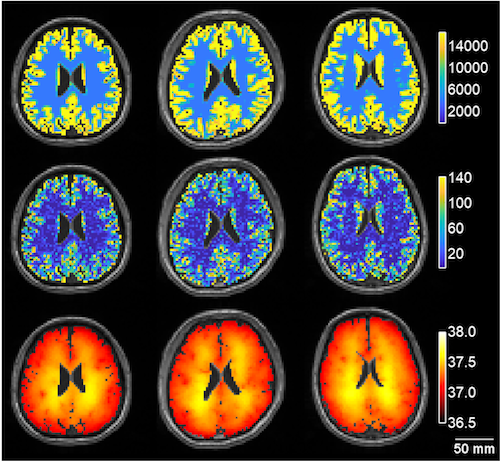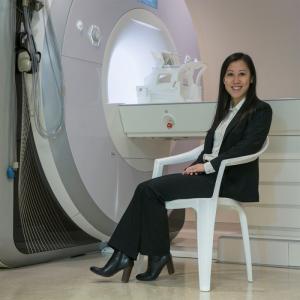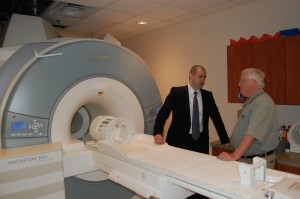Magnetic resonance (MR) imaging technology and biophysical modeling being developed at Emory and Georgia Tech could provide more accurate predictions of brain temperature, which is difficult for doctors to directly assess. The temperature of the brain is critical information after someone has experienced a stroke or cardiac arrest, and even more important during treatment.
The results of a pilot study were published today in the journal Communications Physics.
The project grew out of a collaboration between Candace Fleischer, PhD, an assistant professor of radiology and imaging sciences at Emory, and Andrei Fedorov, PhD, a world expert on thermodynamics and biophysical modeling and a professor of mechanical engineering at Georgia Tech. The first author of the paper is Georgia Tech/Emory biomedical engineering graduate student Dongsuk Sung.
The researchers developed a biophysical model based on heat transfer, using data acquired by imaging individuals’ brain tissue and blood vessel structure. As predicted and in agreement with MR whole brain measurements, brain temperature is slightly higher than core body temperature – about 1 degree C; there are “hot” spots in the brain domains with high rate of metabolism; and the regions of the brain that are closer to the scalp are also slightly cooler than the midbrain.
“We find that every subject’s brain temperature and spatial temperature patterns are different, setting the stage for a personalized approach to managing brain temperature,” says Fleischer, who is also a faculty member in the Wallace H. Coulter Department of Biomedical Engineering and Georgia Tech at Emory.

Researchers then compared the predictions of their model with measurements based on the magnetic resonance properties of water, which change with temperature, and the temperature-insensitive brain metabolite N-acetylaspartate. The Communications Physics paper shows temperature modeling and MR-based measurements for three healthy volunteers.
Fleischer recently received a three-year, $400,000 Trailblazer grant from the National Institute of Biomedical Imaging and Bioengineering to monitor brain temperature while patients are undergoing therapeutic hypothermia after cardiac arrest. More information about that here.







